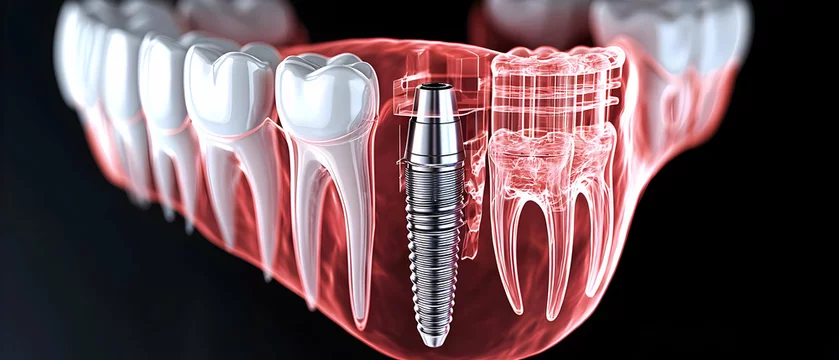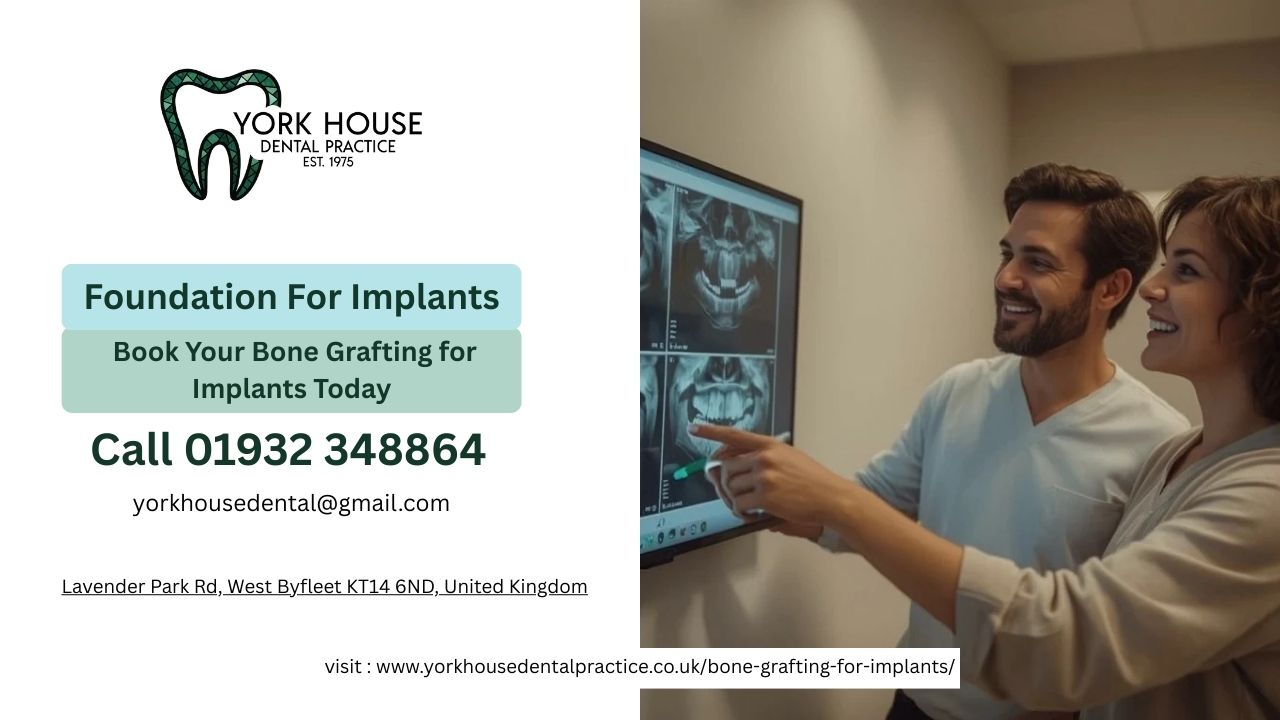
Bone grafting is primarily performed to rebuild areas of the jaw that have lost bone density due to:
Tooth loss or extraction
Periodontal (gum) disease
Injury or trauma to the jawbone
Long-term denture wear
Congenital conditions affecting bone growth
When a tooth is missing, the underlying bone begins to resorb (shrink) over time due to lack of stimulation. Without enough bone volume or density, placing a stable, long-lasting dental implant becomes difficult or impossible. Bone grafting replenishes this lost bone, providing the solid foundation required to support a dental implant securely.
Bone grafting is a surgical procedure that involves placing bone material—either natural or synthetic—into areas where the jawbone has deteriorated. This graft then integrates with your natural bone, stimulating regeneration and increasing bone volume.
There are different types of grafting materials, including:
Autografts – bone from your own body (often the jaw or hip)
Allografts – processed bone from a donor
Xenografts – bone from animal sources, typically bovine
Alloplasts – synthetic bone graft materials
At York House Dental Practice, we carefully evaluate your condition and choose the most suitable option for your individual needs.
The bone grafting process is a well-planned, staged procedure, usually performed in advance of your implant placement. Here's what you can expect:
We begin with a thorough clinical examination and digital imaging (such as CBCT scans) to assess the current bone volume and determine the precise location and extent of grafting needed.
On the day of your procedure, the treatment area is numbed using local anaesthesia to ensure comfort. Sedation options may also be discussed for anxious patients.
The dentist will make a small incision in the gum tissue to expose the area needing bone enhancement. The bone graft material is then placed carefully and secured. In some cases, a membrane may be used to protect the graft and encourage proper healing.
Once the graft is in place, the area is closed with dissolvable sutures. Healing and integration typically take 3 to 6 months, during which the graft material fuses with your natural bone.
After the bone has healed and strengthened, we proceed with the dental implant placement at the restored site.
In some cases, minor grafts (socket preservation) may be done at the same time as tooth extraction or implant placement, but this depends on the severity of bone loss.
Restores Jawbone Structure – Rebuilds lost volume, height, and strength in the jaw
Enables Dental Implants – Makes it possible to place implants in areas with prior bone loss
Improves Long-Term Success Rates – Creates a stable base, reducing the risk of implant failure
Enhances Facial Aesthetics – Restores natural contours of the jaw and prevents facial collapse
Preserves Oral Health – Prevents further bone deterioration and gum recession
Customised to Your Needs – Modern grafting techniques offer tailored solutions for every case
At York House Dental Practice, our focus is not just restoring teeth but restoring overall oral health and function.
Following a bone graft procedure, proper aftercare is essential for optimal healing and integration. Our team will provide detailed instructions, but general guidelines include:
Avoid disturbing the graft site: Do not brush or rinse the area aggressively.
Take prescribed antibiotics or pain relief: As directed by your dentist.
Avoid smoking: Smoking severely impairs healing and may lead to graft failure.
Eat soft foods: Stick to a soft diet for the first few days and avoid crunchy or hard foods.
Use cold packs: To manage swelling during the first 48 hours.
Keep the area clean: Use antimicrobial mouth rinses as prescribed.
Attend all follow-up appointments: So we can monitor your progress and healing.
Most patients recover well within a few days to a week, although the grafted bone itself may take a few months to fully integrate before implants can be placed. For further guidance on dental implants and related procedures such as bone grafting, you can also visit the official NHS Dental Implants page.
The procedure is performed under local anaesthesia, and patients report minimal discomfort. Mild soreness and swelling may occur afterward but can be easily managed with over-the-counter or prescribed medication. Our caring team ensures your experience is as smooth and comfortable as possible from start to finish.
Bone grafting may be necessary for patients who:
Have been missing a tooth or multiple teeth for a prolonged period
Are wearing loose dentures due to bone resorption
Want to replace missing teeth with dental implants but lack sufficient bone
Have experienced trauma or gum disease leading to bone loss
Wish to restore facial contours and function before implant treatment
During your implant consultation at York House Dental Practice, we will determine whether bone grafting is required and plan accordingly.
If you’ve been told you’re not suitable for implants due to jawbone loss, don’t give up—bone grafting may open the door to permanent, natural-looking tooth replacement. Our experienced team in West Byfleet, Surrey is here to guide you every step of the way.


Principal Dentist at York House Dental Practice

All Rights Reserved © 2025 by York House Dental Practice
Designed & SEO by NextDentist